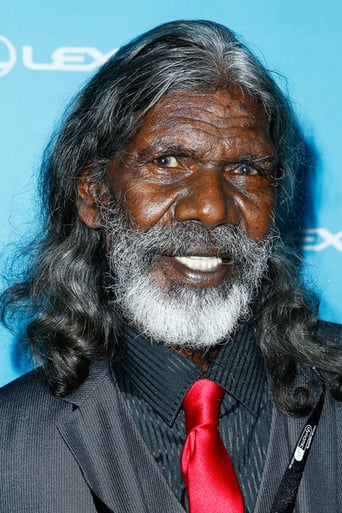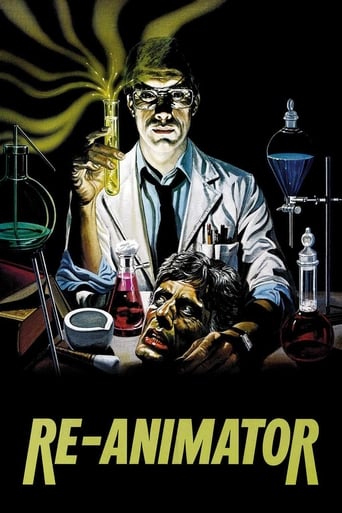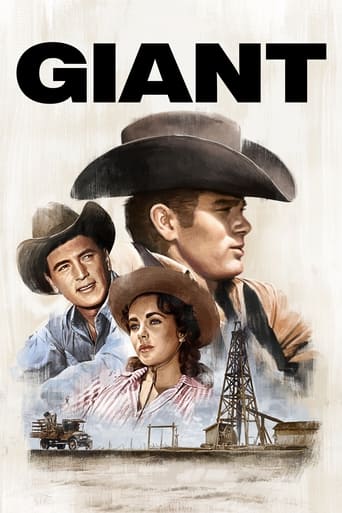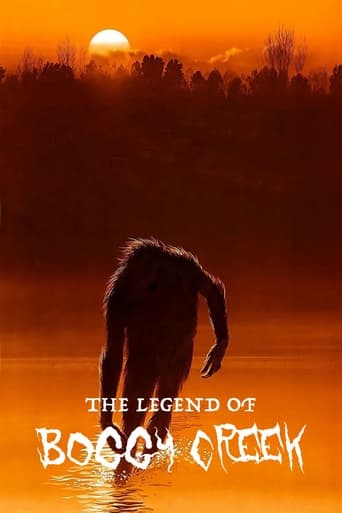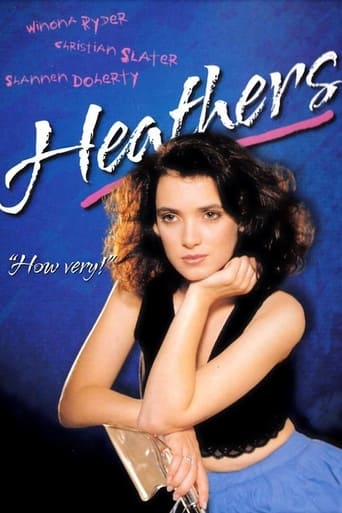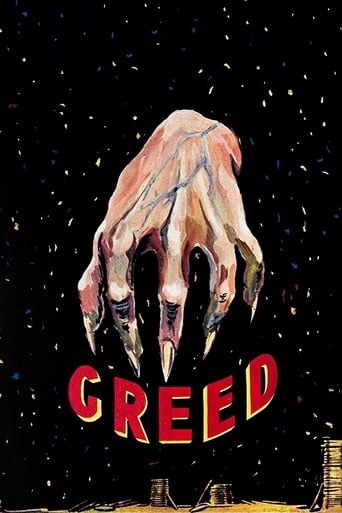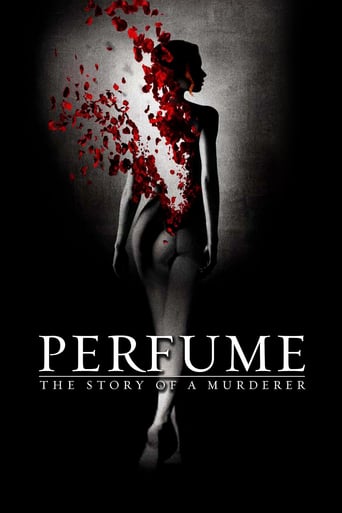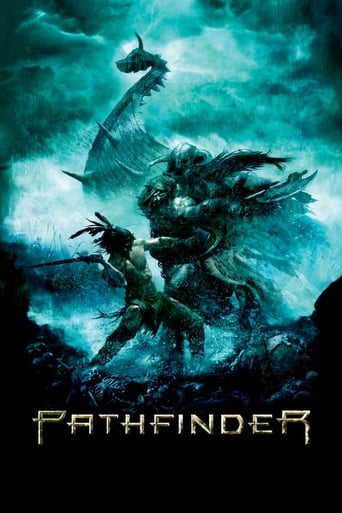
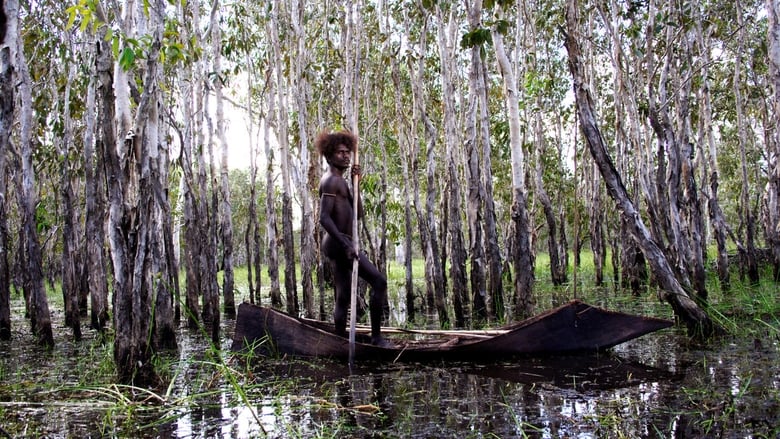
Ten Canoes (2006)
A story within a story within a story. In Australia's Northern Territory, an Aboriginal narrator tells a story about his ancestors on a goose hunt. A youngster on the hunt is being tempted to adultery with his elder brother's wife, so an elder tells him a story from the mythical past about how evil can slip in and cause havoc unless prevented by virtue according to customary tribal law.
Watch Trailer
Cast


Similar titles
Reviews
For a country whose notion of Indigenous Aboriginal culture comes up to The Dreamtime and dot paintings, Ten Canoes might well serve as a lovely refresher course, never mind how Hollywood might react to it. Growing up I recall being fed healthily on these stories as part of an ever-enthusiastic brand of multicultural education, and relishing them because it was easy for even kids to imagine how the ancient storytellers had come to these conclusions by simply looking around them and rewinding. How the stars in the night sky are camp fires burning brightly to guide hunters home, how the rivers are water goannas larger than you or me could ever comprehend, or how the great emu losts its wings because of its own arrogance and pride (Icarus being just pipped on that one). Another tells the story of how the kangaroo was bestowed its pouch because of the kindness it showed towards Byamee, a god disguised as a troubled wombat. What these stories, and what Ten Canoes shows us, is that even as many millennia separate us, our inherent laws and practices are guided by a karmic belief of cause and effect, often with wry consequences. Fair is fair; the universe ensures that you will always get what is coming to you, and it isn't afraid to get creative. Who better to champion the oral traditions of the Indigenous Aborigines than David Gulpilil? He is without a doubt the most mainstream and well-known of the Aboriginal actors, and retains a delighted curiosity from his first ever screen- credit way back in Nicholas Roeg's masterpiece, Walkabout. In that he played a young boy on the eponymous rite of passage, who positively gurgled when asked to demonstrate his knack for finding water in barren desert, and channeled this fevour elsewhere in his mating dance. Gulpilil has lost none of that fresh-faced charm, and although we cannot see his grin, it is easily identifiable in his narration. It is not quite Attenborough; the storyteller observes with an all- seeing eye, but is not afraid (as we might suspect) to insert his own footnotes here and there, and sometimes chuckle along. Rolf de Heer alternates black-and-white and colour stock as if to mimic dusty old storybooks (if they had they kept them) being brought to life orally, and Gulpilil can't always bear to remain impartial. Which is how most of us like our stories told, with a dash of flavour and colour. de Heer uses the visual as a way of representing an age-old reverence for the land. The Aborigines were nomadic hunters and gatherers, never taking more than necessary, and ensuring that the land too could live and breath beneath the soles of their feet. The cinematography is almost sensual; the camera snakes steadily around tangles of bush and grass, like the hunter making his slow advance, or glides serenely, as if it was also balanced on the canoes the men themselves craft out of tree bark. The water's mirror must not break, the ever-constant buzz of the outback unable to be interrupted. At times it simply lingers, and we see how the landscape twitches, and shimmers in the heat. The story is in fact three stories within one another, of one narrator performing for the gathering around the camp fire, and another using a fable as way of caution. So there are thousands of years connecting the story strands, and the film decides to strengthen them using first and foremost humour, and through showing how it has not aged a day from the past. Fart and dick jokes are means of confronting the modern audience, to force a connection that has not been recognised until this moment. And then we see how their morality system has manifested from lifetimes of incidents and misunderstandings. This is a little further from our own comfort zone, a ritual of justice where spears are thrown until the guilty is wounded. So it is shocking when the conclusion, somehow, manages to make sense: "We've speared your man," says one tribe to another, who respond "who speared ours". Perhaps it is Byamee's way of pushing responsibility towards Yeeralparil, who makes the costly error of lusting after his brother's three wives, and through cruel fate, finds the pleasure turned into burden suddenly thrust onto him. We may not subscribe to the spear for a spear ideology that they practised long ago (indeed we have better method not available to them), but somehow we keep making the same mistakes, and punishment happens to chase us out eventually. And yes, we are still prone to laying around all day and eating honey, although we have made an efficient business out of it. The belly laughs when we are caught with sticky fingers still sound the same.
This story begins with an aerial flyover of Arnhem Land in northern Austalia. A narrator comes on saying that he is going to tell a story, his story. His story starts with the recounting of a tale about his ancestors of a few generations back who are making canoes to traverse a crocodile-filled swamp in search of goose eggs. Within that tale a wise older man is telling another, somewhat parallel, tale to his younger brother dating back many generations to "the ancients." In a clever plotting device the ancestor's tale is shown in black and white while the ancient's tale is shown in color. This technique has the dual effect of allowing director Rolf de Heer to duplicate scenes from black and white photographs taken in the area by an anthropologist in the 1930s (photographs that motivated the making of this film), as well as helping the viewer keep the stories straight.The cast consists of a few dozen modern day aboriginals playing the parts in the two stories. They try to capture the reality of the times portrayed, and you can believe that this was the way it could have been thousands of years ago for a tribe of early humans. The earlier Astralians have their own customs and language and the cast speaks in their native language, with English subtitles. I kept thinking of how the basic emotions driving the stories are still with us--fear, jealousy, lust, love, trust, distrust, pride, humor, courage, loyalty, honor. The culture presented is indeed not mine, but it is perfectly understandable. Sorcerers keep the tribe stirred up and mystified with special knowledge of "magic," just as modern religions do (with equal effectiveness). There are laws that must be obeyed, even if unwritten. The young men relish showing prowess in hunting and war making. A creator is deemed the prime mover. Marital relationships are not always harmonious, especially if polygamous. And so on. It appears that no matter how it manifests itself a culture will wrap itself around basic human emotions and desires. It would not be a stretch to recast these stories in a modern setting.The photography of the landscape is beautiful and sensuous; it contributes greatly to the stories by showing what an intimate relationship early peoples had with the land and its fauna.This movie helps us better appreciate where we came from and what we are.
The trailer does in no manner show what this movie is like. In fact The entire movie is quite well summarized in it. The story moves _extremly_ slow and does best mostly for a nap. If you would like to get the impression of the life in the bush, go ahead and watch it. I know for sure that I would rather have seen something else! Looking at the grades I feel like what I felt after seeing Serenity - the votes must come from only the dedicated fans... There is simply not more to write so the rest ends up as a free roll - sorry for that and I know it is against the guide lines. I just feel that... well.. It is not good and the only way that I can spread the word is by saying something and not only be some "stupid smock" giving it two when the statistics shows that it is okay. It simply is not okay.
I had the good fortune of coming across this (somewhat)overlooked gem when it played at one my local art cinemas recently. 'Ten Canoes' is one of those films that is an open window to another culture (albiet one that is still regarded as a mystery to Westerners). It is a multi layered story about love,lust,envy,mistaken identity,revenge,etc. What I admired about it is the fact that it's told as a story within a story within a story,and is shot both in black & white & colour (to transpire time). I guess if I have only minor beef with this film is the fact that although it takes place thousands of years ago, it has to pander to toilet humour from time to time to attract the audiences of today. That aside, Ten Canoes can easily take it's place among other films within this genre (Salt Men Of Tibet,Pathfinder--the original Norwegian edition,and not the tepid American remake of recent,as well as others). It's one of those odd little films that you'll probably have to seek out,as it won't play in mainstream cinemas (it contains yards of male,as well as female nudity--although it contains absolutely no graphic sex scenes)


